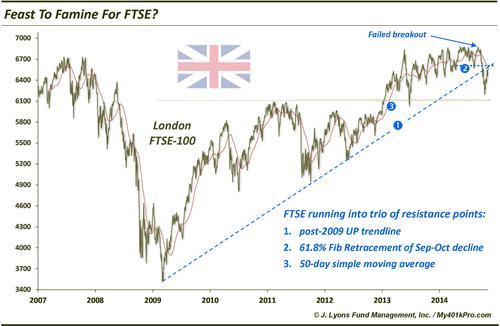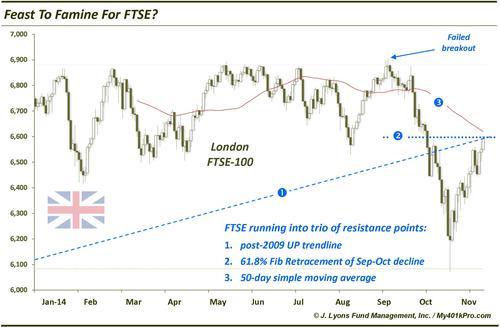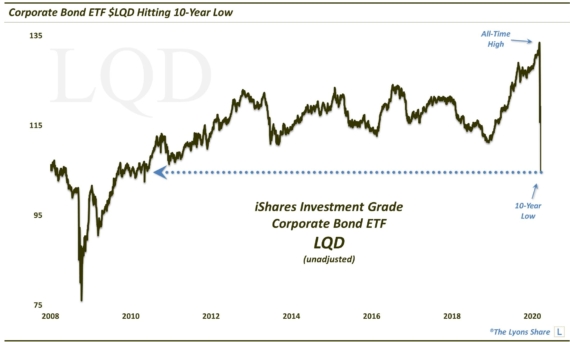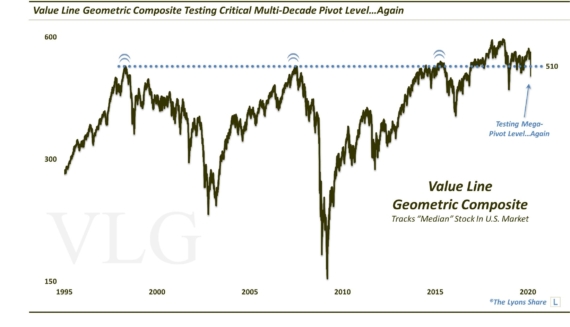Feast To Famine For FTSE?
As recently as September 3, we were noting the potential for a major breakout in the UK FTSE-100. At least we were noting the potential upside in the index should the breakout occur. Well, fortunately, we ended the post by saying the following:
Again, we caution investors or traders against anticipating a breakout. This is particularly true of setups on a long-term scale such as this. Should the FTSE 100 break out, there is plenty of potential further upside to reap.
So wait til you see the whites of the eyes above 6900.
As it turns out the FTSE, which had only traded above 6900 one time in its history (on the last day of the millennium), did trade above 6900 the very next day – but, literally for just minutes. It traded up to 6904 and failed its breakout attempt miserably. Subsequently, the FTSE dropped nearly 12% in almost a straight line. We mentioned that considering the index had been bouncing around near that 6900 level for the past 15 months that perhaps it was too telegraphed a setup. Apparently that was true.
In the process of selling off, the FTSE actually became one of the first non-PIIGS indices around the world to break down through its post-2009 up trendline. At its mid-October low, it finally bounced off a near perfect cluster of 3 key Fibonacci Retracement levels from the major lows in 2009, 2011 and 2012 (a development which we missed at the time, by the way; though, we caught similar such support junctures in the MSCI EAFE and MSCI Europe).
The bounce has now brought the FTSE-100 to a juncture of 3 significant resistance levels.

Those levels include:
- the underside of the broken post-2009 UP trendline
- the 61.8% Fibonacci Retracement of the September-October decline
- the 50-day simple moving average
On a shorter-term chart, the significance of these levels can be seen more clearly.

At current levels, the going gets significantly tougher than the prior three weeks have been for the London FTSE-100. Some profit-taking on the part of traders who caught this bounce certainly seems like a reasonable consideration here. The same goes for a reduction in exposure for those investors who failed to lighten up when the FTSE broke down last month.
What was such a potentially promising long-term “feast” of a setup just 2 months ago turned sour in a hurry. Indeed, investors may be looking at more “famine” from British stocks at this time. Perhaps considering the reputation of British fare, we should not have anticipated such an appetizing outcome in the first place.
____
Read more from Dana Lyons, JLFMI and My401kPro.


